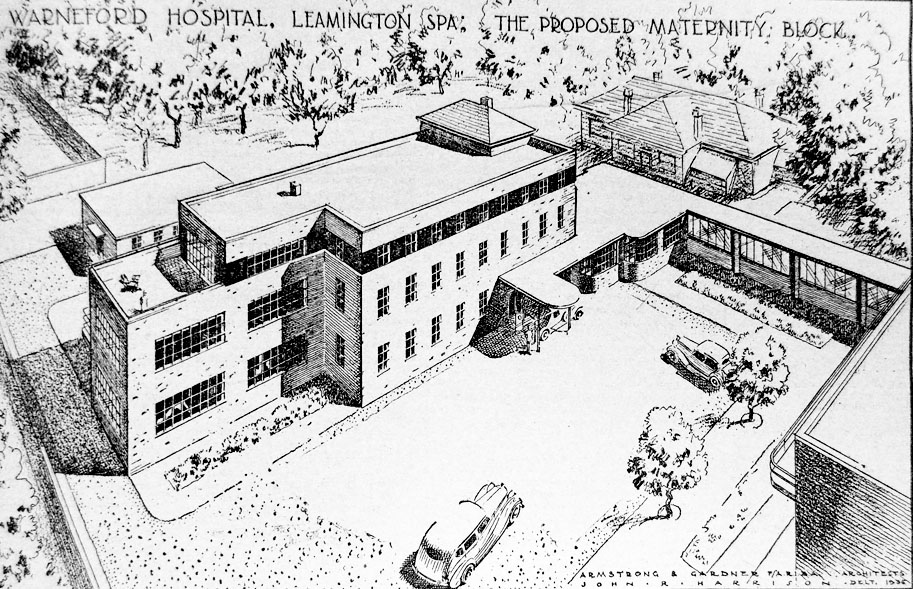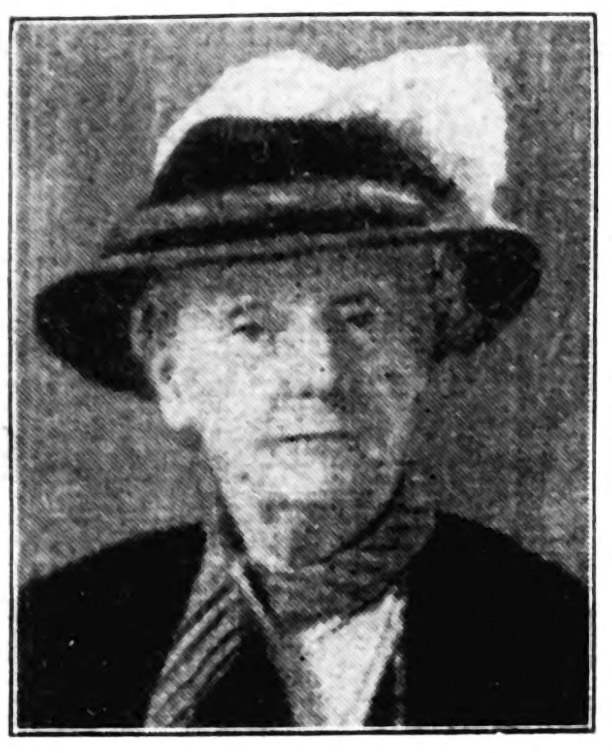Annie Cay and Warneford Hospital
Although my Lockdown History lessons are declining along with the lockdown itself, I thought that following the many comments on the recent photograph of Warneford Hospital posted by Carol, the maternity wing and its connection to Kenilworth would make a good article, particularly for the hundreds and hundreds of townsfolk who became parents or came into this world at Cay Block; or in some cases of course, both!
Warneford Hospital opened in 1834; three quarters of the £4,000 construction cost was donated by eccentric philanthropist, Samuel Warneford, hence the name. It was one of many similar acts, notably in Birmingham, too numerous to be recorded here.
Warneford died in 1855 but Birmingham soon had another great benefactor when it came to hospitals and education, Sir John Jaffray. Jaffray, a newspaper and bank magnate, provided the site for the first chronic illness hospital in the country, a women’s hospital, and a children’s hospital, the forerunner of today’s Birmingham Children’s hospital. Always present at the openings and other events, alongside him would have been his daughter Annie, born 1852.
In 1879, Annie married and became Mrs Albert Cay. Their only child, also Albert, was born the following year. In 1889, the family came to Kenilworth to live at Woodside. They soon became involved in their new home-town; for example Albert set up a reading room for the Parish of St Johns; the gatherings led to the formation of a cricket team that became today’s Kenilworth Cricket Club, but today I shall concentrate on Annie.
In 1890, Annie joined the committee running the Convalescent Home in High Street and in 1901 she paid for Kenilworth to have a district nurse, who made about 300 home visits a month – on her bicycle. This was followed in 1905 by Annie establishing the Kenilworth Maternity Association. In 1905 she replaced Kenilworth’s ‘hand ambulance’ with a horse-drawn replacement; it was to serve Kenilworth for fourteen years until being replaced by an ex-army motor ambulance in 1919. On the last July Saturday in 1913, the Cays entertained 200, mostly Kenilworth, children at Woodside, in connection with Warneford Hospital. Those who had to travel from Leamington arrived in traps they provided.
Their son, Albert jnr was killed on 23rd April 1916 in the battle of Katia on the Sinai Peninsula. Albert Cay was awarded an OBE for his work in connection with the Local War Pensions Committee of which he was treasurer. He was also on the committee of the Warneford Hospital. In Kenilworth, he was a particular supporter of St John’s and ‘the poor of Kenilworth found him a particular friend’. But he died on 10th November 1921 after an illness extending from the early spring.
With her husband and only child gone, Annie Cay, now aged 69, continued supporting the causes she held dear. By 1928, she had been on the committee of the Kenilworth Convalescent Home for 38 or its first 50 years. In 1932 Kenilworth still used a Victorian steam fire engine, hauled to fires by a lorry; Annie stepped in and bought a new fire engine, and named it Albert Cay after her husband. In 1935, Annie Cay was made President of the Jaffray Hospital that her father had started.
Warneford Hospital in Leamington relied upon monetary donations to provide its services but in the early 1930s, these were beginning to diminish. One particular area of concern was the constantly overcrowded maternity ward and in May 1934, an appeal was launched to fund a replacement. Annie Cay stepped in with the first donation, £1,000. ‘For many years Mrs Cay has been a most generous supporter of Warneford Hospital and she has given a great deal of her life to its service. Mrs Cay has done an enormous amount of work for the hospital, and this splendid generosity on her part has brought the much-needed new maternity block within the bounds of possibility’. Annie Cay simply said, ‘Please, I do not desire thanks’.
She later revealed what had led her to make the donation. ‘I am a frequent visitor to the hospital, and when I went into the maternity ward the other day I saw eleven babies in a little space. They could not get out of doors, and there was just enough space for me to get in. Two sets of twins were at a table. For years I have wanted to see a new maternity ward and I thought that now was the time to get on with the work’.
A year later, Mrs Cay was elected as Patroness of the hospital ‘for her many years devoted service to, and support of, the hospital…her work for the Visiting and Samaritan League, of her generous support of all branches of the hospital’s work, and her friendly interest in the welfare of the nurses’.
As donations continued, in 1937, Sir John Siddeley also of Kenilworth, stepped in with £10,000, the result of persuasion by Annie Cay, whilst Annie herself added another £500 as a ‘Coronation gift’. In March 1938, over £27,000 had been raised, and by the time of the foundation-stone laying in July 1938, it had been decided to name the new wing after its original benefactor; Cay Block. It was finally opened during the last week of June 1939. Some weeks later, Annie Cay presented an engraved cup to the mother of the first baby born in the new ward, aptly named Cay Turner. The maternity scheme was still £3,000 short, a debt eventually cleared by a £400 donation from Annie, and £2,000 by Siddeley in early 1940.
In December 1940, 89 year-old Annie Cay had a bad fall at Woodside and broke her femur, her age told against her and she died at home on Sunday 6th April 1941. She had lived at Woodside for 52 years.
The maternity wing at Warneford Hospital carried Annie’s name until its closure and demolition in 1992. Sadly, and perhaps unforgivably, in Kenilworth Albert and Annie Cay, maybe the greatest beneficiaries the town has known are not commemorated even by the naming of a road; it has been put forward by several individuals, including this author.
This is just a small part that Annie, and Albert, Cay played in local good causes; for a full account please see Kenilworth People & Places Volume 2.
Illustrations: Annie from the Coventry Herald in April 1941, and the original sketch of Cay Block that appeared in the Leamington Courier in March 1935.

